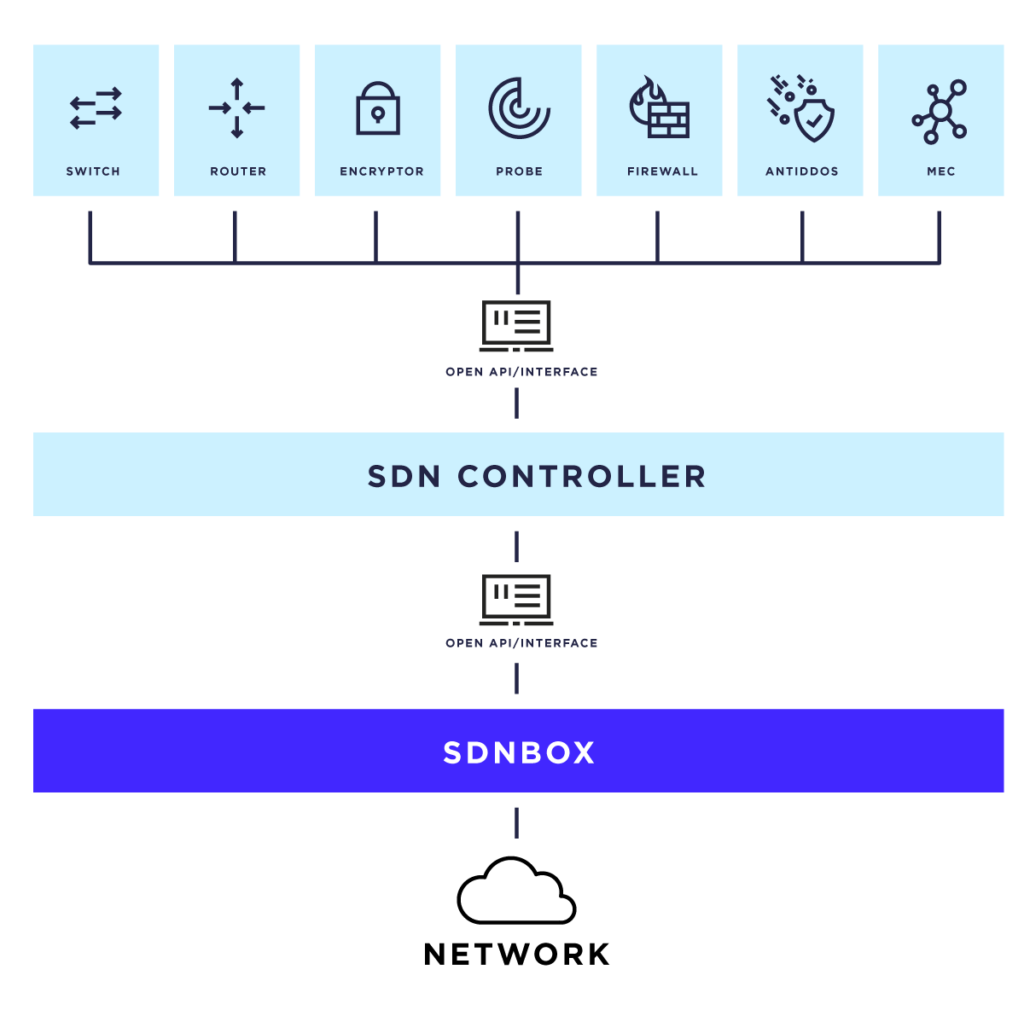An agreement to finance the SDNbox project was signed yesterday, in the presence of government officials. It involves developing the first Polish software-defined network device. It will take 36 months for a fully functional, tested in practice solution in line with the assumptions of SDN (Software Defined Networking) to be developed.
The main topic of the “Poland on the fast track to innovation” conference was Polish innovation and its impact on our country’s economy. The meeting was attended by: Deputy Prime Minister and the Minister of Science and Higher Education – Jarosław Gowin, Minister of Entrepreneurship and Technology – Jadwiga Emilewicz, Deputy Minister of National Defence – Tomasz Zdzikot, Deputy Minister of Science and Higher Education – Piotr Dardziński, Deputy Director of the National Research and Development Centre – Izabela Żmudka and Vice-President at EXATEL – Rafał Magryś. The highlight of the meeting was a solemn signing of an agreement for financing the research and development of project SDNbox. As a consequence, a consortium of EXATEL SA and Enamor International sp. z o.o. received funding in the amount of nearly PLN 10 million.
What is SDN?
SDN (Software Defined Network) is a computer network wherein a typical network device is divided into a control layer (brain) and an element directly handling network traffic (heart). Of course, the brain is responsible for controlling heart’s operation and is able to even define a new (extended) role for it by way of software – a software-defined / programmable network. This is a departure from boxes that technically make up a network known as the Internet. This change can be compared to the transition from landline phones (used only for calling) to mobile computers in the form of smartphones, which are compatible with apps functioning on the Internet.
SDN in practice or the Polish SDNbox
The SDN revolution is bringing a new look at cyberspace by advancing the smart idea to the infrastructural level. As of now, every new online function is actually an installation of a new device. But does it have to be this way? Not any more, since today’s technology allows for more. Let’s look at a smartphone – within standardized components, by simply uploading appropriate software, we can have a mobile office, ruler, compass, navigation, flashlight, portable cinema, star map or an exercise device. We want to transfer this concept to the world of telecommunications. Depending on the controller mechanisms or software installed in a SDNBox, the online device will be able to play radically different functions – it can be a router, switch, server or an element of protection against cyberthreats. Business needs such flexibility, and so does telecommunications, the army and Poland’s industries.

What will SDNbox bring?
The obvious advantage of this project is the development of an innovative product in Poland – one that will be able to compete with other solutions of this type. The stakes are high. The value of the SDN market is estimated at USD 12.5 billion for the year 2020 alone. Yet that’s not all. The SDNBox project is also:
- a finished product after 36 months of work. During this period, the device will be tested in practice. Our objective is to have SDNBox ready for implementation within our network as soon as possible. This will be followed by starting production and commercial distribution. In other words – the project is being implemented with the objective of the possibly fastest practical utilization.
- A better offer for clients – solutions will be delivered faster, and the service itself will offer the possibility of modification “on the go”. This type of flexibility is expected within the market of today – from everyone, including telecommunications companies.
- development of the Polish economy. SDNBox can be easily manufactured and developed in our country. This is the stage during which we will be supported by Enamor International sp. z o.o., our partner in this project. It is also possible for other companies to join the development of the platform later on, by creating their own solutions.
- practical cybersovereignty – networks crucial to the functioning and security of the state (such as critical infrastructure, government networks, etc.) will run on devices produced based on domestic solutions. This means better supervision over each of its elements.


